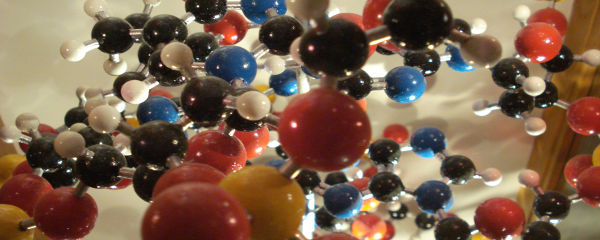What I’ve Learned:
“Mycoplasma: Small things, which probably also come with small packages.”
In every group, there’s one little guy trying to compensate for his small stature by acting tough and being a royal pain in the ass. In the bacterial world, that’s Mycoplasma.
Mycoplasma is a genus — that is, a group of species — of one-celled microscopic critters, just like all other bacteria. But there are a few important differences. For one thing: size. Even by bacterial standards, mycoplasmas are runty; in fact, they hold the record as the smallest living cells known to science.
It’s true. Most people think it’s Verne Troyer. But no. Mycoplasma.
Besides making them cocky and insufferable, mycoplasmas’ small size creates problems for researchers who study them. These bacteria can’t be seen, even under most microscopes, and wriggle through filters that trap their beefier bacterial cousins.
Another difference is the cell wall — a tough layer outside the cell that provides structure and support. Most bacteria (and fungi and algae and plants) have them; mycoplasma species don’t. That’s highly unusual for a single-celled creature. They’re oozing around barely decent, in nothing but their skimpy cell membranes. Mycoplasmas are the creepy exhibitionist neighbors of the bacterial neighborhood, who never put on pants and refuse to close the blinds.
Sadly, the mycoplasmas’ lack of shame causes more problems than the occasional unwanted peepshow. Many antibiotics — including penicillin — attack bacterial cell walls. Mycosplasmas laugh and shake their scantily-clad bacterial butts at these drugs. So if you catch a mycoplasma infection — they cause atypical pneumonia and pelvic inflammatory disease, among others — you won’t get rid of them with the usual antibiotic suspects. The little bastards actually are tougher than they look.
But mycoplasma species aren’t just compensating for puny size. Besides the cell wall, they have genomes smaller than most any other organism — so small, scientists were able to synthesize the whole thing from scratch and effectively create a “synthetic” bacterial cell using the DNA.
Also, they can’t make any of their own amino acids, and leech cholesterol from whatever they’ve infected to shore up their cell membranes. So in a sense, mycoplasmas are incomplete — dependent on hosts to survive, feeble and literally devolving. Scientists think the cell wall and genetic material were lost from Mycoplasma species after they split off from other bacteria.
Seriously, no wonder they’re a pain in the ass. I wouldn’t be surprised if mycoplasmas all had hair plugs and gold chains and drove teeny little BMWs.
Mycoplasmas are so screwy, they’re a big problem for biologists — even the biologists not trying to study them. Maybe especially the ones not trying to study them.
The issue is, mycoplasma contaminations are very hard to detect and require special tests. Much biological research depends on cell lines and tissue cultures — living cells extracted from humans or animals that can be grown in the lab and tested in various ways. But if mycoplasma is lurking unseen inside those cells, then any test results could be compromised. And it’s estimated that a third or more of the world’s cultures may be contaminated.
All that runty bacterial goop screws up the real science, and no one knows exactly what the results are until the cells are cleaned up and experiments repeated. This costs time, money and — worst of all — graduate student sanity. Those poor lackeys don’t have much to begin with, and mycoplasma infections can shred their last remaining wits. I’ve seen it. It’s tragic.
So beware of the Mycosplasma species. They’re tiny, overcompensating, and seemingly everywhere. They’ll make you sick, drive you crazy and get less evolved every day. In short, mycoplasmas are like an unseen horde of Rob Schneiders, storming into your favorite cells. The horror. Oh, the HORROR.



